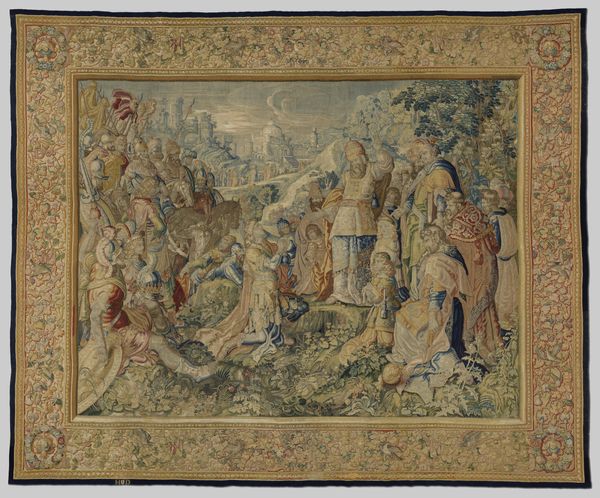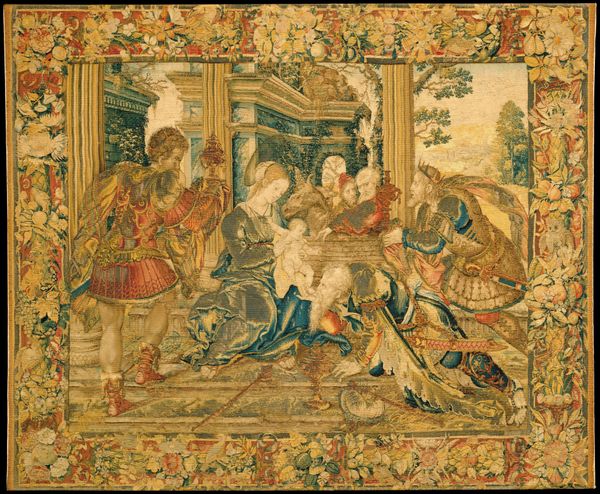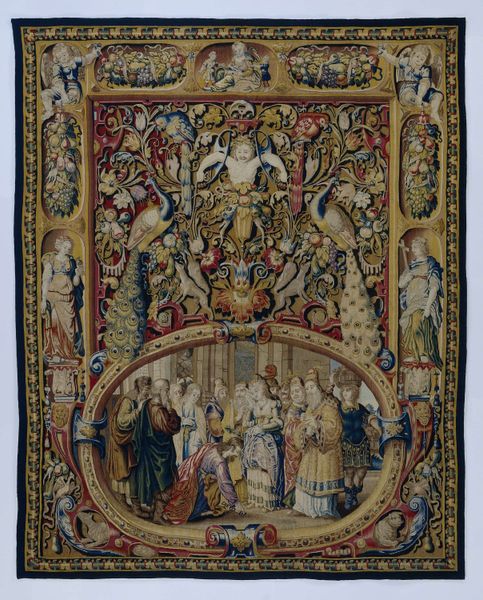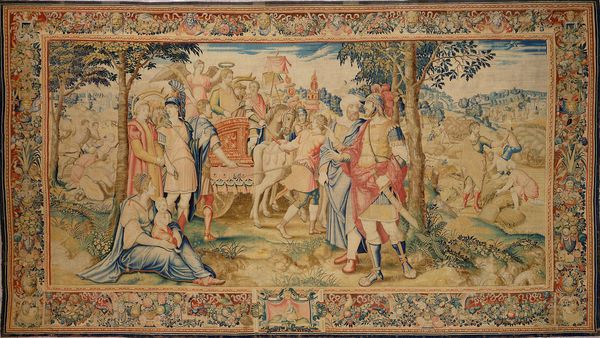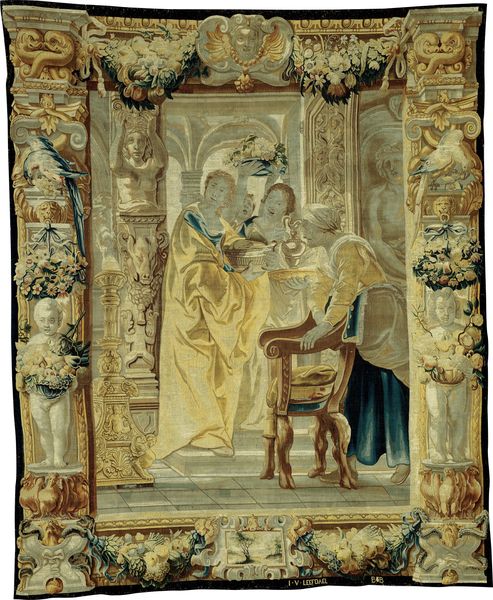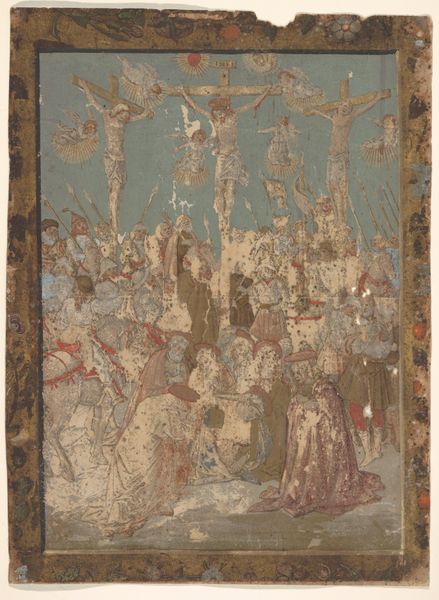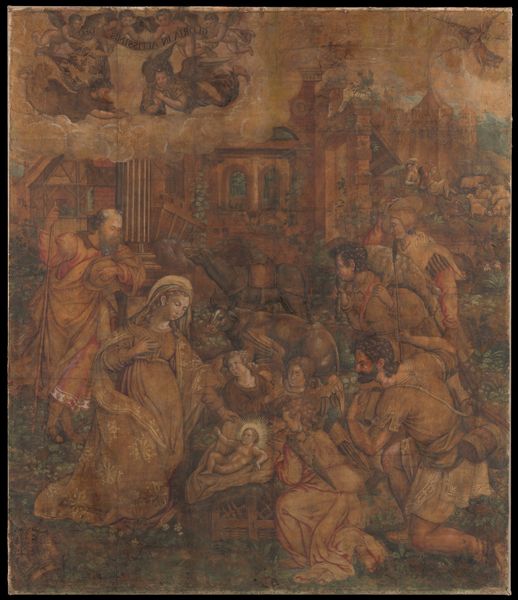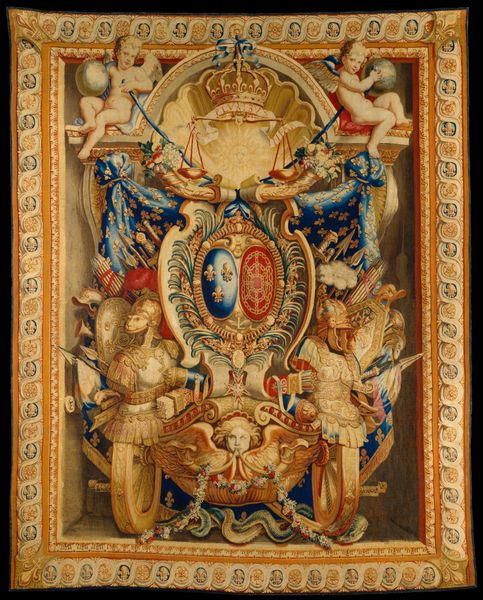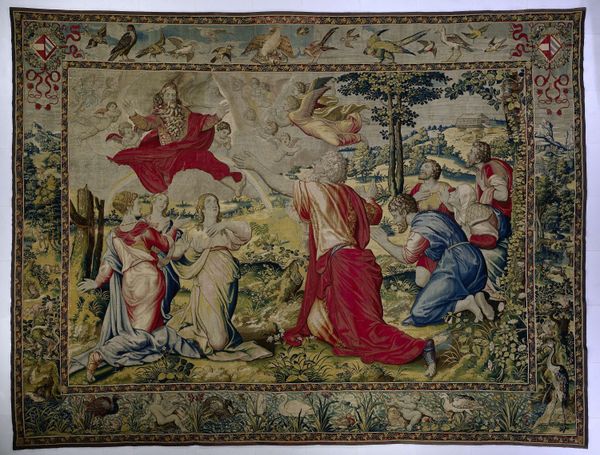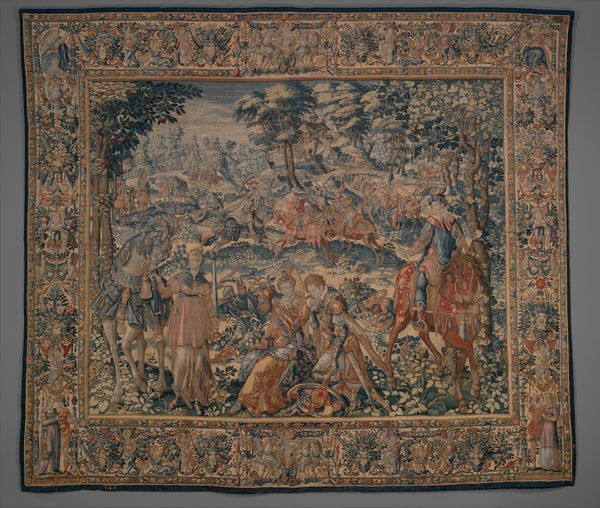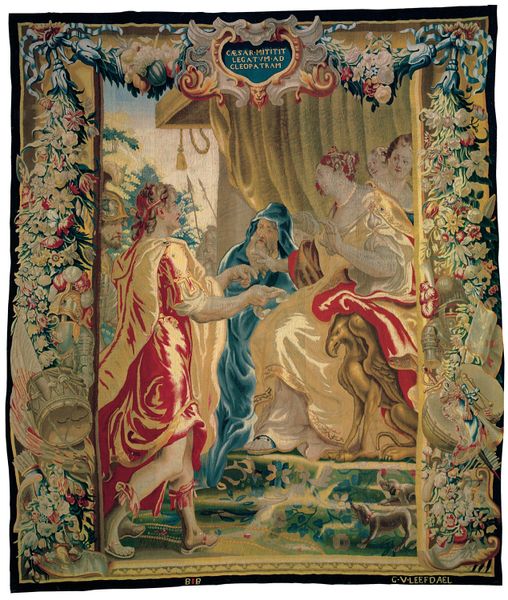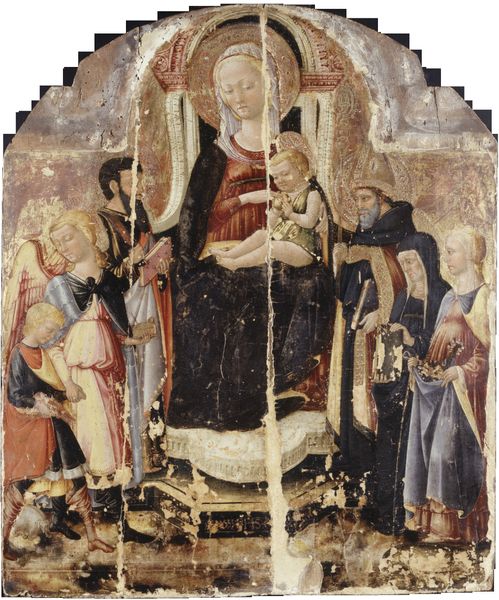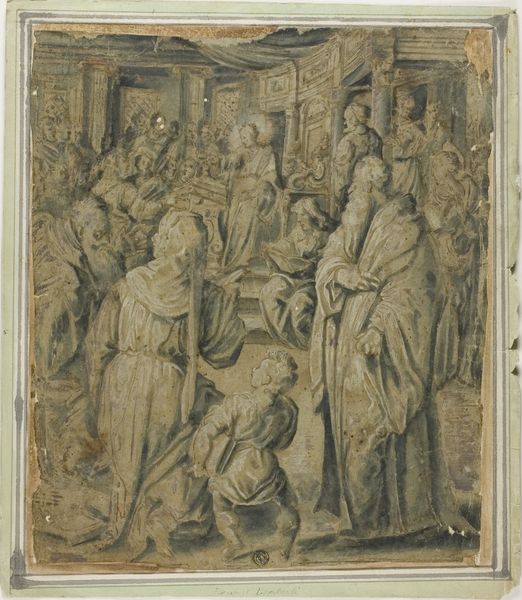
mixed-media, textile
#
mixed-media
#
narrative-art
#
baroque
#
textile
#
figuration
#
oil painting
#
history-painting
Dimensions: height 414.0 cm, width 404.0 cm, weight 32 kg
Copyright: Rijks Museum: Open Domain
Curator: This tapestry, "Scipio and the Ambassadors of Carthage," was created around 1609 by François Spiering. What strikes you most about it at first glance? Editor: An air of negotiation, definitely—all the men gesturing, looking so earnestly. Though a tapestry seems an odd medium to capture such... dynamism. Curator: Indeed. Let's consider the composition. See how the figures are arranged in a shallow space, almost stage-like. This flattening, typical of tapestry, emphasizes the two-dimensionality, forcing the viewer to confront the surface as a designed object. Editor: And all those individualized faces! Spiering goes to great lengths to show the various reactions. I’m particularly drawn to the seated figure of Scipio himself, his relaxed posture amidst the Carthaginian ambassadors’ supplications. This speaks volumes about power, doesn't it? The composed general versus desperate envoys. Curator: Exactly! Consider also the color palette. It is quite restrained, focusing on muted browns, blues, and greens. Notice too the textural richness achieved through the weaving, simulating the folds of fabric and the details of the landscape. Editor: That landscape feels very much like a backdrop, lending this an almost theatrical atmosphere as you pointed out. But back to the symbols… The laurel wreaths might allude to victory. The architecture in the distance perhaps the power of Rome looming over these proceedings? The clothing itself communicates status, wouldn’t you say? Curator: Yes, those material indicators are important. Spiering seems most concerned with balance of form and careful control over details in the material structure. This adds layers of narrative through careful weaving techniques that elevate the drama. Editor: It’s incredible how symbols embedded within the work invite a much deeper experience. The tapestry, therefore, stands as a record of an important historical moment but it also conveys potent underlying meanings related to authority, surrender, and consequence. Curator: Yes, focusing on the internal relations brings a kind of optical and emotional stability. In this manner, Spiering presents not merely a historical account but rather an ideal scenario where elements come together to create a larger-than-life scene that inspires careful engagement.
Comments
No comments
Be the first to comment and join the conversation on the ultimate creative platform.
